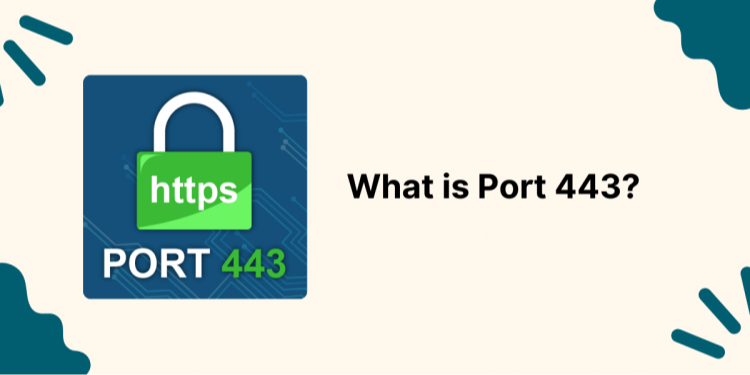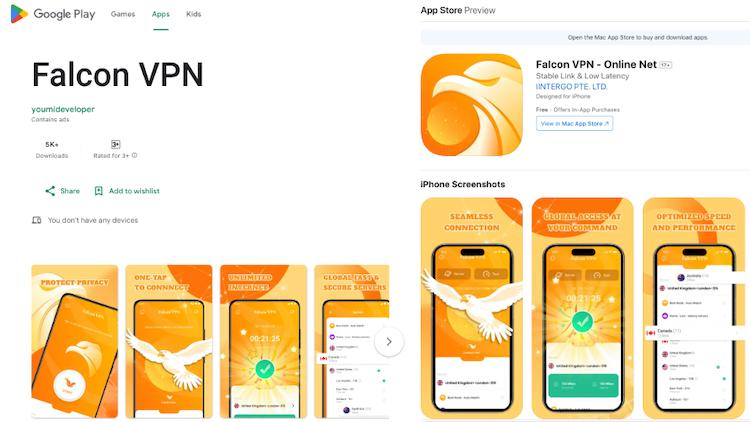When you send sensitive information online, like credit card details or passwords, Port 443 plays a vital role in ensuring your data is protected. Acting as the backbone of HTTPS, it encrypts communication between your browser and the websites you visit. From online shopping to social media, IP port 443 secures digital activities, creating a safety net that shields your information from prying eyes.
But what is port 443, and why is it so essential for secure communication? This guide takes you through how it works, its applications, and tips for maintaining its security. Whether you're a tech-savvy individual or just looking to understand the internet better, learning what port 443 is used for can empower you to browse safely and confidently. Ever wonder how your internet data slips past prying eyes while using a VPN? The secret often lies in the power of VPN ports, with port 443 playing a crucial role in enabling encrypted, uninterrupted access even under strict network controls.

What is Port 443? A Comprehensive Guide to Secure Web Communication
Ever wondered what is port 443 and why it’s so essential? Port 443 isn’t just a random number; it’s your gateway to secure web communication through HTTPS. It’s the backbone of encrypted online interactions, ensuring safety as you browse, shop, and share sensitive data online. If you’ve never thought about this little piece of tech magic before, don’t worry—we’re about to break it all down for you.
Understanding Ports
A port, simply put, is a virtual door that allows computers and devices to communicate with one another over a network. Think of it as a channel that directs your web traffic to the right service, whether you’re loading a webpage, sending an email, or accessing files. Some of the commonly used ports include 443 for secure web traffic and port 80 for unencrypted communication.
Ports also play a critical role in security. By blocking unused or unnecessary ports, firewalls help prevent unauthorized access. For example, while ip port 443 is highly secure because of its encryption, leaving other ports open that you don’t need could expose your system to vulnerabilities.
Why is Port 443 Special?
When it comes to secure web connections, port 443 is the standard. But what is port 443 actually used for? It runs HTTPS (HyperText Transfer Protocol Secure), which encrypts the data exchanged between your browser and a website. This encryption protects your sensitive information, such as passwords and credit card details, from cybercriminals.
Key Functionalities of Port 443
-
Data Encryption
Using SSL/TLS encryption, port 443 ensures that all data transmitted, whether it’s a simple search query or sensitive personal info, is securely packaged and sent. -
Authentication
Websites relying on port 443 undergo an authentication process to verify their identity. This ensures the connection isn’t just secure but also trustworthy. -
Global Standard for Security
HTTPS, running on ip port 443, has become the global standard. Most modern browsers even flag websites not using HTTPS as insecure.
Port 443 vs. Port 80: A Quick Comparison
Understanding the difference between these two ports can shed light on why port 443 is vital for today’s internet.
| Port Number | Protocol | Use Case | Security Level |
|---|---|---|---|
| 80 | HTTP | Browsing unsecured websites | Low – No encryption |
| 443 | HTTPS | Secure web traffic | High – SSL/TLS encryption |
Key Differences
-
Port 80: Handles HTTP, the unencrypted version of web traffic. It is suitable for non-sensitive or internal content but poses significant risks for data interception.
-
Port 443: Encrypts web traffic through HTTPS using SSL/TLS for maximum security. Ideal for sensitive tasks like online banking, e-commerce, or handling personal data.
When choosing between the two, always prioritize port 443 for activities involving privacy and security. Sites that use port 443 display a padlock or “secure” notification in your browser’s URL bar.
Examples of Common Ports and Their Usage
| Port Number | Protocol/Service | Common Uses | Benefits | Drawbacks |
| 80 | HTTP | Browsing unsecured websites | Universally supported, simple | Prone to data interception |
| 443 | HTTPS | Securing web traffic | Encrypts data, trusted worldwide | Outdated SSL/TLS setups risk |
| 22 | SSH | Secure remote server access | Encrypts data, remote management | Vulnerable to brute-force attacks |
| 25 | SMTP | Sending emails | Reliable for email delivery | Prone to spam without added security |
| 53 | DNS | Resolving domain names | Essential for web navigation | Risk of DNS spoofing |
Common Issues and Troubleshooting Port 443
Despite its robust security benefits, port 443 isn’t immune to occasionally running into issues. If you encounter a 443 error, here’s what could be causing it:
-
SSL/TLS certificate issues, such as an expired or improperly installed certificate.
-
Outdated browser versions that might not support newer encryption standards.
-
Temporary network blockages that affect access to the 443 port.
How to Fix a 443 Error
-
Ensure your browser is updated to the latest version.
-
Verify SSL certifications on websites.
-
Check network settings, including firewalls, to make sure port 443 is open and accessible.
Understanding Port 443 and Its Significance in Secure Online Communication
Have you ever asked yourself what is port 443 and why it’s crucial to web security? Well, port 443 is the lifeline of secure internet browsing, using cryptographic protocols like TLS (Transport Layer Security) to ensure a safe and encrypted connection between your browser and the websites you visit. It keeps sensitive data like passwords, banking information, and other personal details protected from hackers.
Here, we’ll break it all down, delivering everything you need to know about port 443, including how it works, its importance in various industries, and even how to check what's using port 443 on your device.
How Does Port 443 Work?
Port 443 functions in tandem with SSL/TLS protocols to secure web traffic. Operating as the backbone of HTTPS connections, it ensures data security through three key elements:
Authentication
SSL/TLS verifies the legitimacy of the website by using digital certificates issued by trusted Certificate Authorities (CAs). This guarantees you're connecting to the real site and not a fraudulent version.
Encryption
All data transmitted through port 443 is encrypted. If intercepted, it’s impossible for outsiders to decipher the information without the proper decryption keys.
Integrity
The protocols ensure that the data you send and receive hasn’t been tampered with during transmission. Any alteration would terminate the connection.
This trifecta of authentication, encryption, and integrity defines why port 443 is vital for secure and private communication online.
The TLS/SSL Handshake Explained
Wondering how this secure interaction begins? When your browser initiates a connection over IP port 443, the TLS/SSL handshake springs into action. It’s a multi-step process, but here’s a simplified version to clarify:
Hello Exchange
Your browser sends a “Client Hello” to the server, listing supported encryption methods. The server responds with a “Server Hello,” choosing the strongest encryption method possible.
Certificate Validation
The server provides its SSL/TLS certificate. Your browser checks the certificate to ensure it’s valid and issued by a trusted authority.
Key Exchange
Both your browser and the server securely exchange encryption keys necessary for an encrypted session.
Secure Session
With the encryption keys in place, both parties can send and receive data securely.
This handshake happens within milliseconds, making it an incredibly seamless yet powerful process that’s foundational to the secure web. Next time you shop online or use Falcon VPN to access global websites, you’re likely relying on this exact mechanism.
Real-World Applications of Port 443
What is port 443 used for, practically speaking? You’ve likely used it countless times without even knowing. Here are some prime examples of industries depending on port 443 for secure communication:
Banking and Finance
From online banking to investment platforms, financial institutions rely on port 443 to encrypt transaction details and safeguard user accounts against cyberattacks.
E-commerce
When you shop online, port 443 encrypts your payment information to protect both you and the retailer, ensuring a seamless and secure checkout process.
Healthcare
Patient portals and telehealth services depend on port 443 to keep sensitive medical information private and secure.
VPN Services
Many VPNs, like Falcon VPN and free vpn - Falcon vpn, use port 443 to bypass network restrictions, offering secure and encrypted browsing sessions. It’s also common to use a Free VPN for Android for safe mobile browsing.
Try Falcon VPN for a easy VPN Experience
Looking to experience all these VPN benefits with an easy-to-use, secure, and reliable tool? Free VPN-Falcon VPN is designed to help you stay private online, access restricted content, and enjoy safer browsing—all in just a few clicks.
How to get started:

- Get the VPN App
Head over to FalconVPN and download the appropriate version for your device. - Complete Installation
Open the downloaded file and follow the prompts to install the VPN app on your device. - Open the VPN App
Launch the app after installation. Select your preferred server location. - Connect to Secure Your Internet
Hit the “Connect” button to encrypt your connection and protect your online activities.
We’ve also added a helpful What Is My Address page where you can instantly see your current IP address—perfect for checking whether your VPN is working correctly.
Everyday Applications of Port 443
Port 443 is widely used wherever secure communication is required. Here’s a closer look at its most common applications:
Online Banking and E-commerce
Port 443 ensures that sensitive financial data like credit card details or banking credentials are encrypted and secure during online transactions.
Social Media Platforms
Activities on platforms like Facebook, Instagram, and Twitter are encrypted via Port 443 to keep personal information private.
Healthcare Services
Port 443 allows secure access to patient portals, safeguarding sensitive health records from prying eyes.
Cloud Storage Services
Platforms like Google Drive and Dropbox use Port 443 to secure file transfers and account information.
Email Services
Secure email platforms use Port 443 to encrypt communication, maintaining user confidentiality.
Essentially, any website or service that uses HTTPS relies on Port 443 to deliver secure and encrypted traffic.
The Role of Port 443 in VPNs
Now, what is Port 443's role when it comes to VPNs? Virtual private networks (VPNs) leverage Port 443 as a key tool to overcome restrictions and censorship. Falcon VPN in particular is one such option that ensures secure browsing.
Disguising VPN Traffic as HTTPS
VPN providers often route their encrypted traffic through IP Port 443. Since most HTTPS traffic is encrypted, it becomes indistinguishable from VPN traffic, allowing secure connections to pass seamlessly through firewalls undetected.
Evading Deep Packet Inspection (DPI)
DPI systems analyze data packets to block unwanted traffic, but Port 443 prevents this. VPN traffic using this port mimics HTTPS, making identification and blocking nearly impossible.
Bypassing Government Censorship
Countries with heavy censorship often restrict services like social media and messaging apps. VPNs like Falcon VPN, which leverage Port 443, enable access to blocked content and services like WhatsApp or international news websites. This makes Falcon VPN and other free VPNs essential tools for internet freedom.
Accessing Blocked Content on Restricted Networks
From schools to workplaces, certain networks block entertainment services or sites. VPNs leveraging Port 443 bypass restrictions, enabling free content access while maintaining secure communication.
Importance of Port 443 in Restrictive Environments
Port 443 is indispensable in environments where surveillance and restrictions reign. But why is Port 443 used in these scenarios so often? Below are the key reasons:
1. Widespread Use of HTTPS
Port 443 underpins HTTPS, which is now the standard for secure websites. Blocking it would disrupt access to essential services, including e-commerce and banking, which governments or organizations are hesitant to entirely impede.
2. Encryption as a Privacy Shield
Traffic over 443 is encrypted with SSL/TLS, preventing censorship systems like DPI from analyzing or filtering content. It provides a layer of security against surveillance attempts.
3. Gateway for Bypassing Firewalls
For users in countries with restricted freedoms, VPNs using Port 443 bypass firewalls seamlessly. This ensures access to critical resources without detection.
4. Privacy Preservation in Surveillance States
Port 443 protects online communication, from accessing sensitive health data to sending private messages. Encrypted traffic through this port safeguards personal privacy against prying eyes.
The Role of HTTPS on Port 443
When asked, "What is port 443 most commonly used for?" the answer is typically HTTPS. This protocol encrypts the communication between browsers and servers, ensuring a secure and private connection. Beyond standard browsing, HTTPS via port 443 enables:
Web Applications
From online banking to cloud platforms, HTTPS ensures secure user interactions.
APIs
Application Programming Interfaces rely on HTTPS over port 443 for seamless and secure data exchange between systems.
IoT Devices
Connected devices communicate securely, preventing unauthorized access to sensitive data.
Encrypted communication through HTTPS continues to be the primary driver behind port 443’s widespread use.
Beyond HTTPS: Other Protocols on Port 443
While HTTPS dominates, there's more to understand when exploring "ip port 443." Several other protocols take advantage of the strong security features provided by this port.
Common Protocols Using Port 443
| Protocol | Description | Use Case Example |
|---|---|---|
| FTPS (File Transfer Protocol Secure) | Uses SSL/TLS to encrypt file transfers. Used when ports 21/990 are blocked. | Secure file uploads/downloads |
| WSS (WebSockets over TLS) | Real-time encrypted communication using WebSockets. | Live chat apps, real-time dashboards |
| VPN Traffic | VPNs disguise traffic as HTTPS to bypass firewalls. | Free VPN for Android |
| SMTPS (Secure Mail Transfer Protocol) | Sends email securely when traditional email ports are blocked. | Sending encrypted emails under restrictions |
| Custom Protocols | Enterprise or IoT systems configure proprietary secure communication over port 443. | Secure industrial control systems |
Troubleshooting and Tools
How to See What is Using Port 443
If you're troubleshooting or encountering issues, it's helpful to know how to see what is using port 443 on your system. Use these methods:
-
On Windows:
Then match the PID in Task Manager
-
On macOS/Linux:
This will show the application using the port
Understanding 443 Error Messages
A 443 error usually points to issues with HTTPS connectivity, such as:
-
Certificate mismatch or expiration
-
Firewall blocking the port
-
VPN conflicts
-
Browser-related HTTPS settings
Application Conflicts (Continued)
Sometimes, multiple programs may try to use Port 443 simultaneously, leading to resource conflicts, freezes, or dropped connections.
Steps to fix:
-
Restart the conflicting apps: A simple reboot can resolve temporary conflicts.
-
Check what’s using Port 443: On Windows, run
netstat -ano | findstr :443in Command Prompt to view the process ID (PID) using the port. Then, open Task Manager and locate the PID to identify the app. On macOS, usesudo lsof -i :443in Terminal. -
Reassign ports if possible: If the conflicting app allows, change the default port to avoid clashes.
-
Keep software up to date: Ensure all applications are running their latest versions to prevent legacy bugs or incompatibility issues.
Best Practices for Ongoing Port 443 Maintenance
To keep Port 443 secure and operating smoothly over time, apply these ongoing security and performance measures:
1. Use a Reputable VPN
Encrypting your outbound traffic with a VPN adds an extra layer of protection over public networks, especially when accessing unsecured Wi-Fi.
2. Regularly Patch Operating Systems
Keeping your operating system up to date ensures that known vulnerabilities—particularly those related to secure port protocols—are patched promptly.
3. Audit Certificates and Renew Early
Use automated certificate management tools like Let’s Encrypt or Certbot to auto-renew and validate your SSL/TLS certificates, reducing the risk of expired cert errors.
4. Enable Logging and Intrusion Detection
Activate system and firewall logging for Port 443 to monitor any suspicious access attempts. Pair it with intrusion detection systems (IDS) like Snort or OSSEC for real-time alerts.
5. Disable Unused Services
Minimize attack vectors by shutting down web services that don’t require HTTPS or Port 443 access, especially on public-facing systems.
Resetting Port Configurations on Routers
If you’ve confirmed that Port 443 is not working properly, resetting your router’s settings may resolve the issue.
Log In to Your Router
-
Enter your router’s IP address (e.g.,
192.168.1.1) into a web browser. -
Log in using the administrator credentials.
Check and Adjust Port Settings
Ensure no rules are blocking ip port 443. If needed, add a new rule with the following:
| Setting | Value |
|---|---|
| Protocol | TCP |
| Port Range | 443 |
| Destination | Your device’s local IP (e.g., 192.168.1.100) |
Perform a Factory Reset
-
Use a pin to press and hold the reset button on your router.
-
Reconfigure your network settings after the reset.
Update Router Firmware
-
Check your router’s admin panel for firmware updates.
-
Install any available updates to fix bugs affecting port 443 functionality.
Why Port 443 Is Crucial for VPN Connections
When it comes to online security and seamless connectivity, port 443 stands out as a pivotal resource. Used universally for HTTPS traffic, this port plays an essential role in enabling VPNs to function efficiently, especially in restrictive environments.
But what is port 443, and why is it a game-changer for VPN users? This guide explores its significance, advantages, and how VPNs like Falcon VPN use it to deliver unmatched security and performance.
The Role of Port 443 in VPN Security
Global Compatibility
One of the primary reasons ip port 443 is indispensable is its universal acceptance. Nearly all networks rely on this port for secure web traffic. VPNs using 443 port ensure smooth operation with no extra configurations or risk of being blocked.
| Feature | Benefit |
|---|---|
| Universally Accepted | Compatible with most networks |
| No Extra Configuration | Works without advanced setup |
| Bypasses Restrictions | Helps users evade strict network controls |
Reliable Encryption and Privacy
VPNs tunneling through port 443 use SSL/TLS encryption, the same technology that secures HTTPS websites. This creates a double protection layer:
-
Tunneling Protocol + SSL/TLS = Maximum Security
-
Keeps sensitive data private and secure
-
Prevents interception or unauthorized access
Uninterrupted Access in Challenging Environments
From corporate proxies to university networks and strict ISPs, port 443 ensures minimal disruption. Unlike other ports, 443 port used for VPN traffic is broadly trusted, eliminating connectivity issues like the dreaded 443 error.
How Falcon VPN Uses Port 443 for Superior Connectivity
Falcon VPN is a leading example of how a VPN can utilize port 443 to offer users better privacy and smoother access.
Smooth Access in Restricted Regions
In heavily censored areas, many users wonder how to see what is using port 443. Falcon VPN helps by routing traffic in a way that mimics regular web browsing:
-
Disguises VPN traffic as HTTPS
-
Nearly impossible to block without affecting core internet services
-
Helps users overcome ISP or governmental restrictions
Enhanced Privacy Features
Falcon VPN’s use of ip port 443 disguises VPN data as standard encrypted HTTPS traffic:
| Technique | Benefit |
|---|---|
| Deep Packet Inspection Bypass | Avoids detection on monitored networks |
| SSL/TLS Obfuscation | Hides VPN identity, boosts privacy |
| Stable & Secure | Ideal for hostile environments where VPNs are restricted |
Cross-Device Performance Optimization
Falcon VPN works seamlessly across devices. Whether you're working from a laptop or testing a Free iphone vpn-Falcon VPN the use of port 443 provides consistent and secure performance.
Final Thoughts on What Is Port 443
Understanding what is port 443 is crucial for anyone who values online privacy and reliable access. Whether bypassing firewalls or ensuring encrypted connections, 443 port used for VPN traffic offers a universal and secure solution.
For enhanced protection and ease of use, tools like Falcon VPN ensure you stay protected while enjoying unrestricted access. Knowing how to see what is using port 443 also equips you to troubleshoot issues effectively.
FAQ About Port 443
What Is Port 443 Used For?
Port 443 enables secure communication via HTTPS. It uses SSL/TLS encryption to secure information between browsers and servers. Common use cases include:
-
Online banking
-
E-commerce
-
Cloud services
-
APIs
| Protocol | Port | Encryption | Use Case |
|---|---|---|---|
| HTTP | 80 | None | General, unencrypted web traffic |
| HTTPS | 443 | SSL/TLS | Secure, encrypted web traffic |
Does HTTPS Always Use Port 443?
No, while port 443 is the default for HTTPS, other ports can be configured. Still, 443 ensures:
-
Compatibility
-
Security
-
Simpler network setup
It is the globally recognized standard, making 443 port used for secure web traffic ideal.
What’s the Difference Between Port 80 and Port 443?
| Port | Protocol | Encryption | Risk Level |
|---|---|---|---|
| 80 | HTTP | None | High (data visible) |
| 443 | HTTPS | SSL/TLS | Low (data encrypted) |
Port 80 transmits data in plain text, while port 443 secures it. If privacy is a concern, port 443 is the clear winner.
Is It Safe to Keep Port 443 Open?
Yes. Leaving port 443 open is safe as long as:
-
SSL/TLS certificates are current
-
Your server is securely configured
Proper configuration prevents exploitation while maintaining functionality for HTTPS and VPN use.
Can Port 443 Be Blocked?
Yes, but it’s uncommon. Blocking port 443 disrupts HTTPS, making most websites unusable. This reinforces:
-
Why port 443 is essential
-
The rarity of 443 error from intentional blocking
Such blocking severely limits access to web services, making it impractical.
How to See What Is Using Port 443?
If you’re unsure what’s occupying port 443, try these tools:
Windows Command Prompt:
Online Tools:
-
YouGetSignal (check open ports)
-
Port scanners or Telnet tools
Identifying what’s using ip port 443 helps resolve conflicts, prevent 443 error, and optimize VPN connections.
Summary Table: Key Insights on Port 443
| Topic | Key Takeaway |
|---|---|
| What is port 443 | Default port for HTTPS, secures online traffic via SSL/TLS |
| ip port 443 usage | Enables VPNs and encrypted web browsing |
| 443 error causes | Blocked port, router misconfigurations, software conflicts |
| How to see what is using port 443 | Use Netstat, Telnet, or online tools |
| 443 port used for VPN | Essential for encrypted, undetectable VPN connections |
| Falcon VPN and port 443 | Bypasses censorship, ensures stability, enhances privacy |

John Miller is a tech enthusiast and online privacy advocate with over 8 years of experience in VPN and cybersecurity. He writes expert guides to help users navigate VPN options, enhance their online security, and protect their privacy on the internet.



